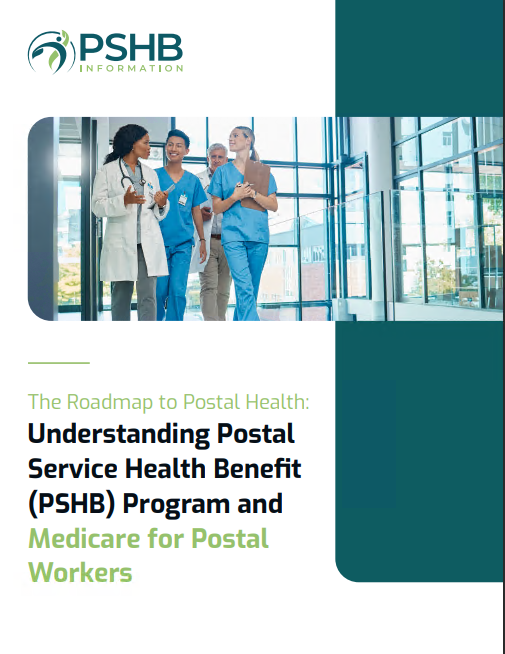Key Takeaways:
-
Understanding how premiums, deductibles, and copays work together is essential for maximizing the value of your Postal Service Health Benefits (PSHB) plan.
-
Making informed decisions about your health coverage can save you money and ensure you get the care you need when you need it.
Breaking Down Health Insurance Costs
When it comes to health insurance, there are three primary costs to consider: premiums, deductibles, and copays. These terms might feel overwhelming at first, but once you understand how they interact, you’ll be better equipped to choose the right PSHB plan and manage your healthcare expenses effectively.
Premiums: Your Entry Fee to Coverage
Your premium is the amount you pay regularly—typically biweekly or monthly—to keep your PSHB coverage active. Think of it as the ticket price for accessing health insurance. Even if you don’t use your benefits frequently, your premium ensures you’re covered when you need care.
Premiums vary depending on the type of coverage you select. For instance, choosing a Self Only plan will generally cost less than a Self Plus One or Self and Family plan. While it might be tempting to opt for the lowest premium, it’s crucial to weigh this cost against the other components of your plan.
Deductibles: The Initial Investment
Before your insurance starts covering certain services, you’ll need to pay out-of-pocket up to your deductible. Deductibles can vary significantly across PSHB plans, so understanding your plan’s specific amount is critical. Lower deductibles often come with higher premiums, while higher deductibles might be paired with lower premiums.
For example, if your plan has a $1,500 deductible, you’ll need to cover the first $1,500 of eligible medical expenses before your insurance starts sharing the costs. Some services, like preventive care, might not require you to meet the deductible, so check your plan’s details.
Copays: Your Share of the Costs
Copays are fixed amounts you pay for specific services, such as doctor visits or prescription medications. They’re usually due at the time of service and are separate from your deductible. For instance, you might pay $30 for a primary care visit or $50 for a specialist.
It’s important to note that copays can vary based on the type of care you receive and whether you’re visiting an in-network or out-of-network provider. Staying in-network typically results in lower copays, so take advantage of the providers available through your PSHB plan.
The Bigger Picture: Coinsurance and Out-of-Pocket Maximums
Coinsurance: Sharing the Load
Once you’ve met your deductible, you might still need to pay coinsurance. This is the percentage of costs you’re responsible for after your deductible has been satisfied. For example, if your plan’s coinsurance rate is 20% and you receive a $1,000 medical service, you’ll pay $200, and your plan will cover the rest.
Coinsurance rates can vary depending on the type of service and whether it’s in-network or out-of-network. Reviewing your plan’s coinsurance details can help you anticipate potential costs.
Out-of-Pocket Maximum: Your Safety Net
The out-of-pocket maximum is the most you’ll have to pay for covered services in a year. Once you hit this limit, your PSHB plan will cover 100% of eligible costs for the rest of the year.
For 2025, PSHB plans have set out-of-pocket maximums for in-network services at $7,500 for Self Only coverage and $15,000 for Self Plus One or Self and Family coverage. Out-of-network services may have different limits, so it’s essential to review your plan’s specifics.
Balancing Cost and Coverage
Choosing the right PSHB plan involves balancing your healthcare needs with your budget. Here are some tips to help you decide:
-
Assess Your Health Needs: Consider how often you visit doctors, require medications, or anticipate needing specialized care. If you have frequent medical needs, a plan with a higher premium but lower deductible and copays might be more cost-effective.
-
Understand Your Financial Situation: Evaluate how much you can afford in premiums versus potential out-of-pocket costs. If you’re healthy and don’t use medical services often, a high-deductible plan with lower premiums might be a good fit.
-
Review Plan Details: Each PSHB plan comes with a brochure outlining its benefits, costs, and provider networks. Take the time to compare options and ensure your preferred providers are in-network.
-
Plan for the Unexpected: Life is unpredictable. Consider how your plan’s out-of-pocket maximum and coinsurance rates will impact your finances in case of a major health event.
Leveraging Preventive Care and Wellness Programs
Most PSHB plans include comprehensive preventive care at no additional cost. This can include annual check-ups, vaccinations, and screenings. Utilizing these services not only helps you stay healthy but also prevents more costly medical issues down the line.
Additionally, many plans offer wellness incentives, such as fitness reimbursements or health coaching. Taking advantage of these programs can improve your overall well-being and make the most of your benefits.
Timing Matters: Key Deadlines
To make the most of your PSHB plan, it’s crucial to stay aware of enrollment periods and other key dates:
-
Open Season: This is the time to review and make changes to your plan. For 2025, Open Season ended in December 2024, but you can still make adjustments during Qualifying Life Events (QLEs).
-
Plan Year: Your plan year aligns with the calendar year, meaning any changes take effect on January 1 and run through December 31.
Mark your calendar and review your plan annually to ensure it continues to meet your needs.
Making the Most of Your PSHB Coverage
Your PSHB plan is designed to provide comprehensive health coverage, but its true value lies in how you use it. Here are some strategies to maximize your benefits:
-
Stay In-Network: Using in-network providers reduces your out-of-pocket costs and ensures you get the best rates.
-
Use Generic Medications: If you’re prescribed medications, ask your provider if a generic version is available. They’re often just as effective and significantly cheaper.
-
Plan for Large Expenses: If you anticipate significant healthcare needs, such as surgery or specialized treatment, plan these services for after you’ve met your deductible to minimize costs.
-
Track Your Spending: Keep an eye on how much you’ve spent toward your deductible and out-of-pocket maximum. Knowing where you stand can help you budget and time your care.
Wrapping It All Up: Your Health, Your Plan
Understanding the costs behind your PSHB coverage—premiums, deductibles, copays, coinsurance, and out-of-pocket maximums—is the key to making informed decisions. By evaluating your needs and using your benefits wisely, you can strike the perfect balance between coverage and affordability. Remember, your health is your most valuable asset, and your PSHB plan is here to help you protect it.












